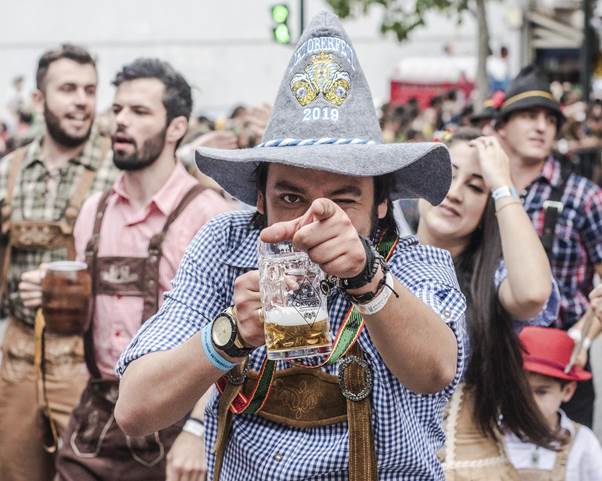Throughout history, humans have gathered to celebrate milestones, share joy, and escape the pressures of everyday life. These gatherings have evolved into what is often referred to as party culture, a phenomenon that shapes social life across generations. From traditional feasts to modern nightclubs, this culture reflects how societies define fun, connection, and even identity. In today’s fast-paced world, party culture is not only about leisure but also about community, creativity, and self-expression.

Defining Party Culture
Party culture refers to the shared traditions, practices, and attitudes surrounding social celebrations. It can include anything from casual house parties and music festivals to high-end corporate events and traditional cultural gatherings. What unites these different forms is their purpose: to foster enjoyment, connection, and often a sense of belonging.
The rise of globalization and technology has also transformed party culture, making it more diverse and accessible. Online invitations, themed events, and even virtual parties demonstrate how celebrations continue to evolve with modern lifestyles.
Historical Roots of Party Culture
Although many associate party culture with nightlife, its roots go far deeper. Ancient civilizations organized festivals to honor gods, mark harvests, or celebrate victories. For example, the Roman Saturnalia festival was filled with feasting, dancing, and music, while medieval banquets in Europe were central to noble life.
Over centuries, these traditions adapted to social changes, eventually shaping the modern forms of party culture we see today. From jazz-filled gatherings of the 1920s to today’s electronic music festivals, every era has left its mark on how people come together to celebrate.
Party Culture and Social Identity
At its core, party culture is about connection. Parties act as social platforms where people meet new friends, strengthen existing relationships, and explore shared interests. For many, participation in this culture is tied to identity certain music styles, fashion choices, or event preferences reflect belonging to specific social groups.
Youth in particular often use party culture to experiment with freedom and individuality. Nightclubs, raves, or university parties provide spaces where they can test boundaries, embrace diversity, and develop confidence in social interactions.
The Role of Music and Dance
No discussion of party culture is complete without acknowledging the central role of music and dance. Whether it’s traditional drumming at cultural festivals, DJs at nightclubs, or live bands at weddings, music creates the atmosphere that defines a celebration.
Dance, too, plays an important role by encouraging participation and breaking down barriers. In many cases, the music genres associated with party culture hip-hop, electronic, salsa, or rock reflect broader cultural movements and global influences.
Positive Aspects of Party Culture
Party culture offers a wide range of benefits for individuals and communities.
- Stress relief: Parties allow people to temporarily disconnect from routine pressures.
- Cultural exchange: Events often feature traditions, foods, and music from diverse backgrounds.
- Creativity: Themes, costumes, and performances highlight artistic expression.
- Networking: Many professional opportunities and friendships are formed at parties.
These benefits make party culture more than simple entertainment; it becomes an essential tool for fostering joy, creativity, and social bonding.

Challenges and Criticisms
While party culture has positive dimensions, it also faces criticism. Excessive partying can lead to issues like alcohol misuse, unsafe behavior, or disrupted routines. For young people especially, peer pressure within this culture can sometimes encourage risky decisions.
Moreover, commercialized party culture such as expensive nightclubs or exclusive events may create inequality, limiting access only to those who can afford it. Environmental concerns also arise from large-scale festivals that generate significant waste. Balancing celebration with responsibility remains one of the ongoing challenges.
The Digital Transformation of Party Culture
The digital age has reshaped how party culture operates. Social media platforms are often used to promote events, share highlights, and create trends. Platforms like TikTok and Instagram influence party fashion, playlists, and even dance moves.
Virtual parties also gained popularity, especially during global restrictions on gatherings. This shows how adaptable party culture is, capable of surviving even in times when physical interaction is limited. At the same time, technology has increased inclusivity, allowing people from different parts of the world to participate in shared celebrations online.
Party Culture Around the World
Party culture varies widely depending on cultural backgrounds. In Brazil, Carnival showcases vibrant parades, music, and costumes. In India, festivals like Holi blend tradition with joyful celebration. Western nightlife emphasizes clubs, concerts, and bars, while African communities often highlight music and dance in outdoor gatherings.
These differences highlight that party culture is both universal and unique it exists everywhere, but its expression is shaped by local traditions, values, and histories.
The Future of Party Culture
Looking ahead, sustainability and inclusivity are likely to define the future of party culture. Eco-friendly festivals, alcohol-free events, and gatherings that prioritize safety are already gaining popularity. Organizers are also focusing on creating spaces where people of all genders, backgrounds, and abilities feel welcome.
Technology will continue to play a role, with innovations in virtual reality, live streaming, and AI-driven event planning shaping the next wave of celebrations. However, the essence of party culture human connection, joy, and creativity will always remain central.
Conclusion
Party culture is much more than loud music and dancing it is a reflection of how societies express joy, create connections, and embrace diversity. It has historical roots, cultural significance, and an evolving role in shaping identity. While it faces challenges related to health, inequality, and commercialization, its positive influence on community life is undeniable.
As we move toward a future that values inclusivity and sustainability, party culture will continue to adapt, proving that the need to gather, celebrate, and connect is an essential part of being human. In every corner of the world, the rhythm of celebration beats on, reminding us that joy is best shared.